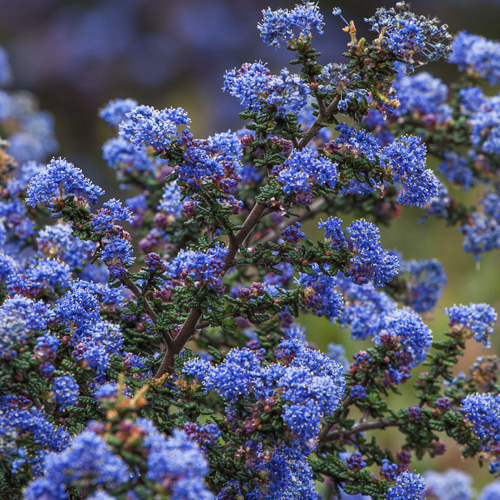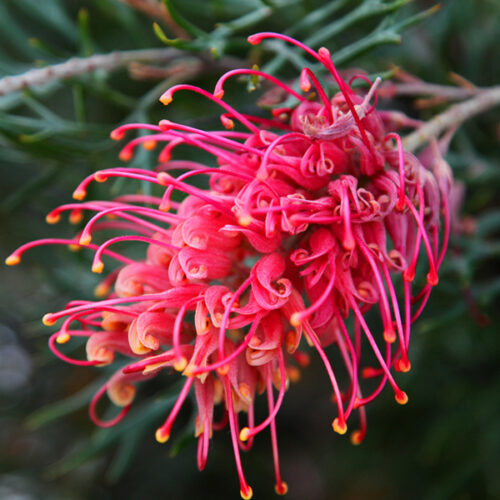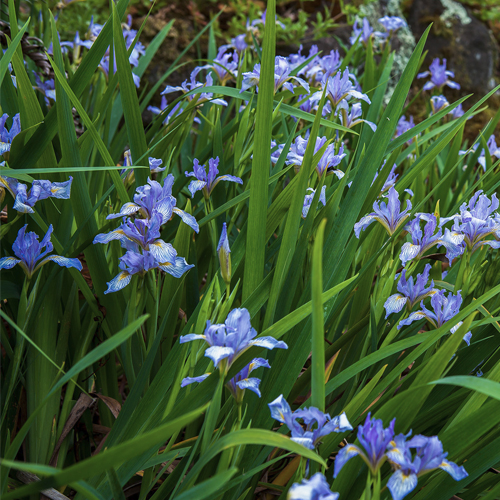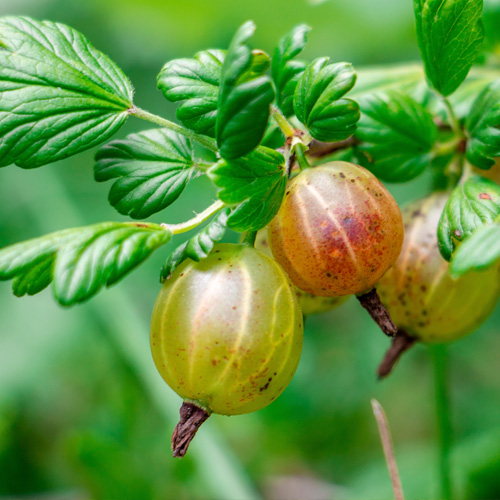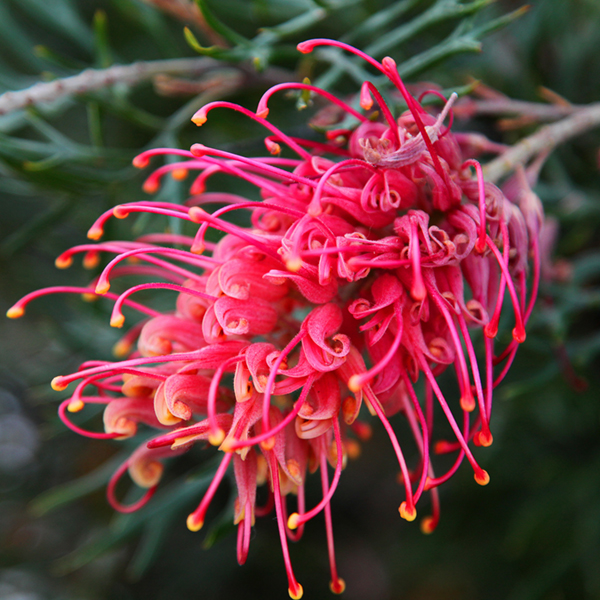Serpentine Bayview Habitat Garden
BACK TO FULL TOUR
Garden Features
Drought Tolerant
Edible Garden
California Natives
Deer Resistant
Pesticide Free
Reclaimed/Recycled Materials
Lawn-Free Landscaping
Permeable Surfaces
Wildlife Habitat
Partner: Marin Water
An artist creates a native sanctuary in Marin.
I moved to Tiburon in 2014. The site did not have much flat ground at all, in fact most of it was extremely steep. Originally planted in 2000, it had been neglected, and other than a few old shrubs and some trees, it was full of black acacia, echium and weed grass, with a few pyracathas thrown in. I knew I wanted to provide habitat for the local creatures, and give enrichment in food and beauty to the people that see my garden.
Repelling Down the Hillside:
Intially, I had to rappel down most of the hillside to weed and plant. I watched the weather and sun patterns and hired a landscape architect to design plans for terracing and steps and fencing that the neighbors and town would approve. When the bids for the contracting came in astronomically high (like the cost of a small house), I decided on a slower, less permanent and certainly not polished approach to create access, using many reclaimed materials, and skip the fence altogether.
About The Garden:
The Garden Design
It is the design principles of “Variety and Repetition” that most turn me on, and one can definitely see that in my garden designing. The idea to create mosaics on the materials I used down the hillside came naturally, and showcasing the creatures that live here seemed perfect. I have many more plans, but landscape design is “the slowest performance art”.
The Challenges
Because deer are in the yard every day, I have planted some non-native plants, either for their beauty, or fruit. Besides dealing with the incline and the deer, growing things in the serpentine soil has been another challenge. Growing up in California, I fully embrace drought tolerant garden practices, so I was hoping that the terracing would help slow my water run off, besides allowing safer access. It seems to have worked.
The Inspiration
I have been inspired by the writings of Judith Lowry, and Doug Tallamy, LOVE “Calscape”, and rationalize my collector addiction with the goal of “Biodiversity”. I feel the need to experiment to see what will work in each situation, but love learning about flora.
Marin Water Resources:
The District has ongoing water rules in place, designed to eliminate water waste throughout Marin, year-round. These rules apply to customers within the District’s service area, which covers central and southern Marin. If you receive your water bill from a different agency, please check with that agency regarding any applicable water use rules:
- Water Rules: To learn more about the Ongoing Water Rules.
- Rebates and Programs: Marin Water offers a great package of rebates and money-saving incentives for water conservation.
- Water Saving Tips: A list of ways you can use water efficiently in the home and in the garden.
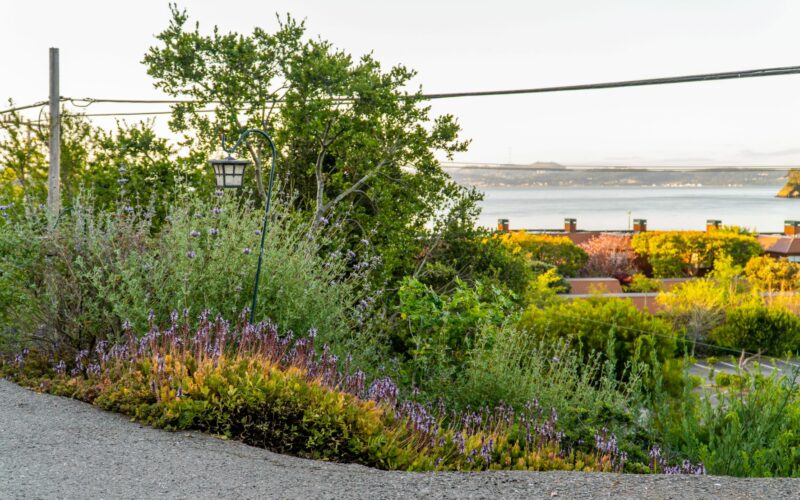
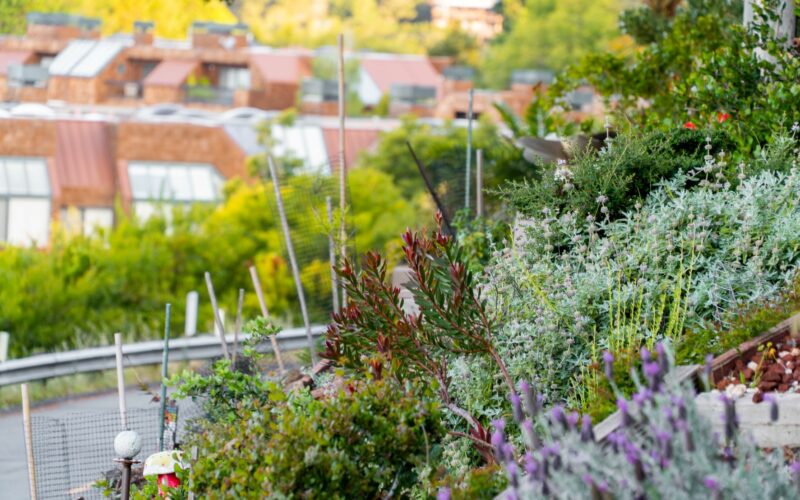
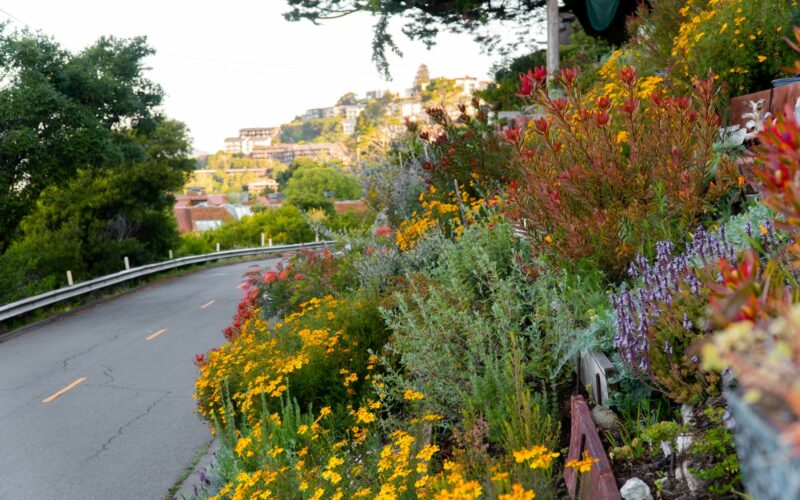
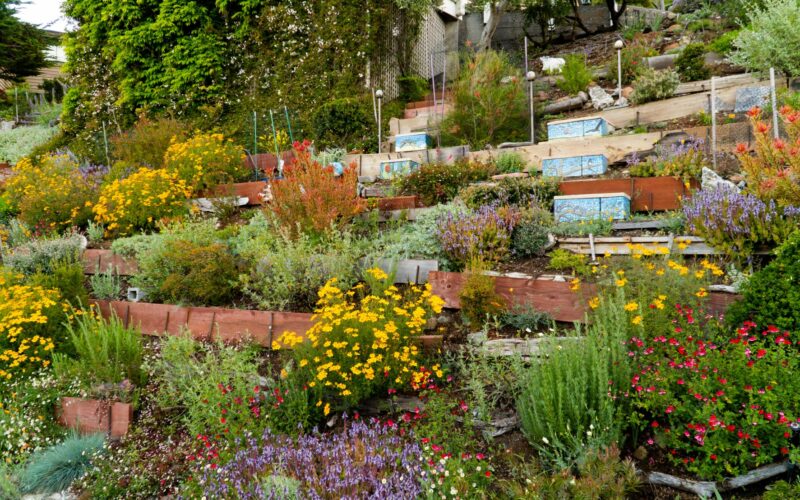
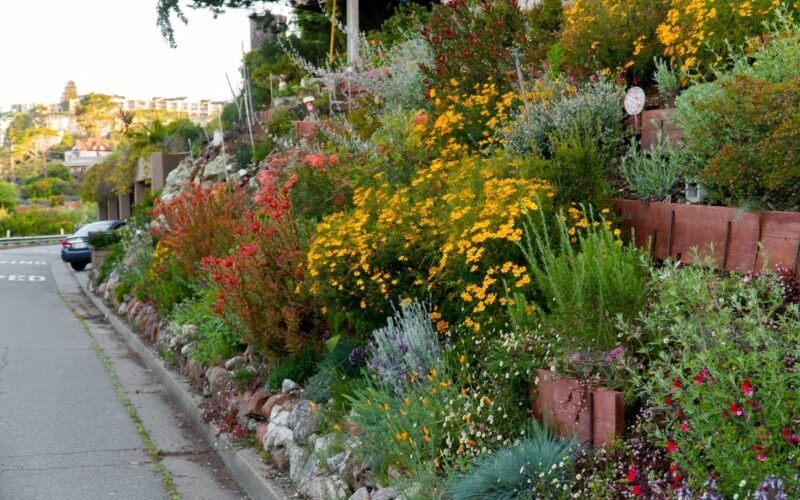
Plants in this Garden
Salvia clevelandii
Favorite Garden Suppliers
CNL Native Plant Nursery
254 Shoreline Highway Mill Valley
Goodman's Building Supply
775 Redwood Highway Mill Valley
